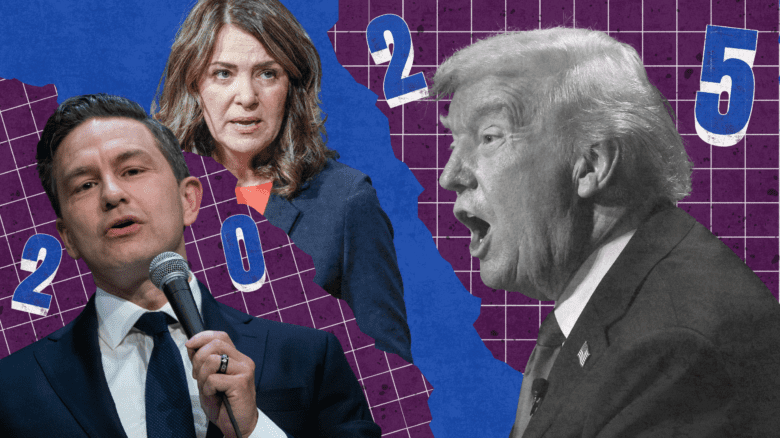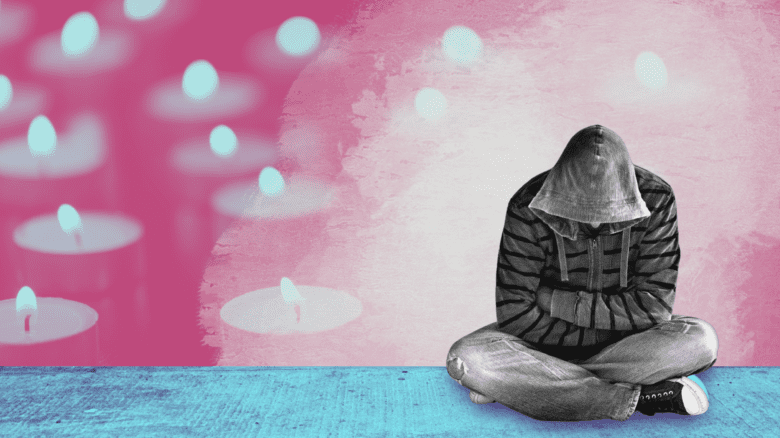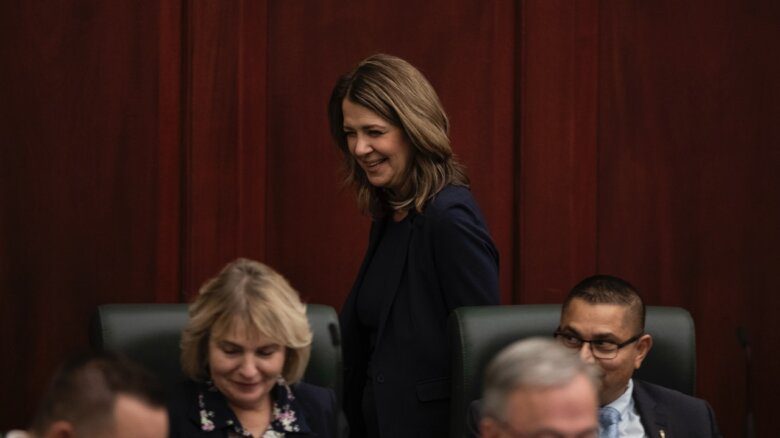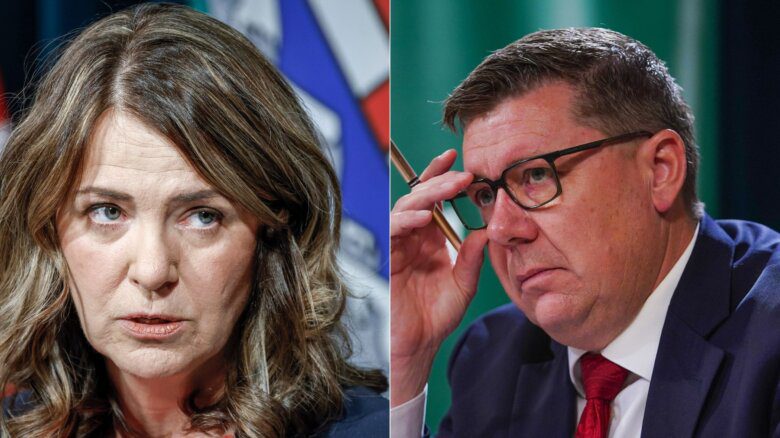Whether it’s their freedom to dress in drag or their right to publicly name bigotry for what it is, queer people’s freedom of speech is under attack from both governments and private individuals. While the legal stakes are clear, the legal nuances are not. What, after all, is free speech? Does it protect queer people?
I’m a law student at the University of Calgary and a co-founder of the Women’s Legal Education and Action Fund’s Calgary branch, an organization dedicated to advancing feminist causes through legal education and activism. I’m here to answer these questions and more about freedom of speech—or “protected speech” in legal parlance—so you’re better positioned to navigate the current political and legal moment.
What is protected speech?
You’ve heard of “free speech,” right? Well, that’s basically what we’re talking about.
Protected speech is all the forms of expression that are free from government prohibition, censure and reprisal—basically, all those ways in which the government might prevent you from expressing yourself.
In both Canada and the U.S., the freedom to express yourself is constitutionally protected. The Canadian Charter of Rights and Freedoms lists “freedom of thought, belief, opinion and expression, including freedom of the press and other media of communication” as one of the “fundamental freedoms” to which everyone in the country is entitled. The First Amendment to the American Bill of Rights prohibits Congress and, through the Fourteenth Amendment, state governments from passing any law “abridging the freedom of speech, or of the press.”
I thought we were talking about “speech.” Why did you say “expression”?
“Speech,” in this context, means more than just the words that come out of your mouth.
In Canada, the Charter protects “expressive content.” As the Supreme Court of Canada put it in the leading case on this matter, known as the Irwin Toy decision, expressive content is any activity that “conveys or attempts to convey a meaning.” Parking a car doesn’t usually communicate meaning, so as an activity it does not generally qualify as protected speech; but if a person chooses to protest something by parking their car in an area that the government has designated as off-limits, then the activity might benefit from Charter protection. As usual when it comes to the law, what does and does not qualify as protected speech depends on context and interpretation.
In the U.S., the Constitution similarly protects a wide variety of expressive activities. This includes so-called “pure speech,” which is spoken; written and published speech; expressive content, such as is sometimes seen at protests (e.g., flag burning); and the combination of speech and conduct, such as, again, is characteristic of public protests. Freedom of speech also covers the right not to speak, whether symbolically or literally, such as by refusing to salute the American flag. And since the 2010 Citizens United decision, corporations in the U.S. can exercise their free speech through unlimited political contributions.
Is all expression protected?
No. While the constitutional provisions that protect expression are broadly worded, the courts in both Canada and the U.S. have limited their scope.
The Canadian Charter of Rights and Freedoms itself allows the government to limit people’s right to free expression in certain circumstances. In the Charter’s words, those include “such reasonable limits prescribed by law as can be demonstrably justified in a free and democratic society.” Basically, the question is whether a law restricts speech as minimally as is necessary to achieve a goal of public importance. So, for example, a total ban on publishing opinion polls three days before an election is too broad and too blunt a measure to combat misinformation, considering the profound limitation it imposes on the media’s free expression. While a total ban on the possession of child pornography is constitutionally justified because it only prohibits those forms of expression that fuel violence against children.
If a form of expression is violent, it will always fall short of Charter protection. Uttering threats, counselling a person to commit suicide and libelous and slanderous speech are also subject to government prohibition, as is, more mundanely, the information that may be included on a sign posted within a municipality.
The U.S. Constitution does not contain a limitation clause of the sort found in the Charter. This has made it more difficult for American courts to uphold laws that restrict freedom of speech.
The Supreme Court of the United States has thus upheld as instances of protected speech everything from false and defamatory statements published in a newspaper without malice, to advertisements of lawful casino gambling and of tobacco products near schools. Indeed,the U.S. freedom of speech covers “most things we say, even things that offend, even things that hurt and wound, even things that deceive, that are false,” as Ben Wizner, director of the American Civil Liberties Union (ACLU)’s Speech, Privacy, and Technology project, recently put it in an ACLU podcast.
Nonetheless, there is still some speech that does not benefit from constitutional protection in the American context. This includes speech that advocates illegal conduct. Here, the speech must both intend and be likely to incite imminent criminal activity—the so-called “Brandenburg test.” It also includes obscenity, which is currently evaluated under the “Miller test.” This test asks, among other things, whether an average person, applying their own community’s standards, would view an expressive work as appealing to the “prurient interest,” and whether that work is without serious literary, artistic, political or scientific value. Most adult pornography does not qualify as obscene under this definition. Although, in 1999, the owner of a gay bar in Nebraska was prosecuted for displaying gay pornographic art in the bar’s basement, a curious decision that shows freedom of speech has historically been curtailed for homophobic reasons rather than good legal ones.
My employer has banned me from wearing a Pride shirt on the job. Are they violating my freedom of speech?
Probably not. But it’s complicated.
The Canadian and American constitutions only apply to their respective governments. This means that they only grant you freedom from government prohibition and censure of your expressive activities. So unless your employer is the government, you probably don’t have a constitutional right to wear a Pride shirt at work.
The first caveat here is that “government” means more than just the Canadian Parliament and the American Congress. For example, the First Amendment applies with full force to public universities in the U.S. This is not generally true in Canada; however, those post-secondary institutions that receive direct oversight and management by an elected official are subject to the Charter. The Charter also applies to private organizations carrying out statutory duties—that is, something a law specifically obligates them to do, like deciding who can and cannot practise law in a province; or fulfilling government objectives—for example, hospitals providing healthcare to the public.
The second caveat is that expression benefits from more than just constitutional protection.
“In addition to the Charter, the rights, freedoms and civil liberties of all of those in Canada are protected through other quasi-constitutional law such as … federal, provincial and territorial human rights legislation, which applies to private actors,” Harini Sivalingam, director of the Equality Program at the Canadian Civil Liberties Association, tells Xtra via email. “Protection of the rights of workers are also enshrined in employment standards laws, collective bargaining agreements and grievance and arbitration processes.”
In the U.S., some of these sub-constitutional protections are quite strong. In Connecticut, for example, state law penalizes employers who discipline employees that exercise their First Amendment rights in the workplace. While the States’ federally enacted National Labor Relations Act specifically protects employees’ rights to engage in speech about unionization, wages and workplace safety, among other topics. And Title VII of the Civil Rights Act of 1964 protects speech that names workplace harassment or discrimination.
What’s an example of protected speech helping queer people?
Little Sister’s Book & Art Emporium is a queer bookstore in Vancouver, B.C. From its founding in 1983 through to 1998, Little Sister’s was the target of ongoing censorship by Canadian customs officials. The latter would hold up, and often seize, the LGBTQ2S+ erotica the bookstore was importing from the U.S. on the grounds that the literature was obscene.
At the time, the government did not need to prove that something was obscene in order to stop its importation—importers had to prove that their materials were not obscene. The Supreme Court of Canada struck down this so-called “reverse onus” provision as unconstitutional. As the Court put it, “Customs officials have no authority to deny entry to sexually explicit material unless it comes within the narrow category of pornography that Parliament has validly criminalized as obscene.” And it is on the government to prove that something falls under the obscenity umbrella.
This might sound like a small victory. But it places a huge burden of proof on the government and means that, in practice, queer erotica is protected speech, free to flow across Canada’s borders for distribution by queer retailers like Little Sister’s.
Another example is that in the U.S., the First Amendment is looking to be a vital shield for drag performers in states where drag and gender nonconformity are being targeted for bans. In March, Tennessee became the first state in the country to criminalize drag performances that occur in public or where minors are present. A federal judge earlier this month struck down the law as unconstitutional because it “was passed for the impermissible purpose of chilling constitutionally protected speech.”
In a statement published on its website after the federal court decision, GLAAD characterized the ruling as a “turning point” that puts American lawmakers on notice “that our constitutional freedom of speech and expression protects everyone and propels our culture forward.”
Does protected speech protect bigots, too?
Yes. For better and for worse, freedom of speech generally grants people the right to express themselves in ways that are hurtful, mean or prejudiced toward others. As well as the right not to express themselves in ways that are supportive of people they disagree with, like the LGBTQ2S+ community.
This means that, yes, those people yelling queerphobic slurs at your Pride parade are exercising their freedom of speech, too. As long as they’re not actively inciting violence, that is.
So, what about hate speech?
It depends where you are.
The Canadian Criminal Code criminalizes “Every one who, by communicating statements in any public place, incites hatred against any identifiable group where such incitement is likely to lead to a breach of the peace.” Hate speech, in other words, is illegal in Canada.
But the Supreme Court of Canada has made it clear that the definition of “hatred” is a narrow one. In the Court’s words, it describes “a most extreme emotion that belies reason; an emotion that, if exercised against members of an identifiable group, implies that those individuals are to be despised, scorned, denied respect and made subject to ill-treatment on the basis of group affiliation.” And while such speech falls within the protection of the Charter’s free expression guarantee, governments can reasonably restrict it without running afoul of the Constitution.
Thus, for example, it is hate speech to distribute flyrs that say “Keep homosexuality out of Saskatoon’s public schools!” and “Sodomites in our public schools” and containing statements “equating homosexuals with carriers of disease, sex addicts, pedophiles and predators who would proselytize vulnerable children and cause their premature death”—as Saskatchewan resident Bill Whatcott did in 2001 and 2002 on behalf of the Christian Truth Activists, a small “anti-abortion and anti-LGBTQ2S+ evangelical group” of which he was the head. Such expression exposes gay people to “detestation” and “vilification.”
In the U.S., however, hate speech benefits from First Amendment protection—and there is no legal mechanism for restricting it apart from the prohibitions on inciting imminent illegal acts, engaging in harassment or uttering threats with the intention of causing someone to fear for their bodily safety.
For example, the Westboro Baptist Church—a hate group—is free to picket military funerals with homophobic signs. Indeed, according to former ACLU president Nadine Strossen in an interview with NPR, “The Supreme Court never has created a category of speech that is defined by its hateful conduct, labelled it hate speech and said that that is categorically excluded by the first amendment. Speech cannot be punished just because of its hateful content.”
What is being done to reform protected speech laws so they better protect LGBTQ2S+ people?
One of the leading areas of active law reform in Canada is in the area of SLAPPs: Strategic Lawsuits Against Public Participation.
These are lawsuits designed to bury people under a mountain of expensive and time-consuming litigation so they won’t speak out on matters of public concern.
Suppose that one day you saw a public school board trustee making online comments that were derogatory towards the trans community. So, you took to the media to decry those comments as “intolerant” and “bigoted,” only to find yourself on the receiving end of a baseless defamation lawsuit by the very bigot you spoke out against. You would be the victim of a SLAPP.
And that’s exactly what happened to B.C. teacher Glen Hansman in 2017 and 2018.
When, in May of this year, the Supreme Court of Canada weighed in on whether the defamation suit against Hansman should be allowed to go to trial, it handed LGBTQ2S+ people in Canada a major victory for their freedom of expression. “Counter-speech” that is “motivated by a desire to promote tolerance and respect for a marginalized group in society … is deserving of significant protection,” the Court wrote in its findings.
The Skipping Stone Foundation, a Calgary-based trans rights organization, was one of the groups that helped defend Hansman’s right to speak out against anti-trans bigotry. According to co-founder Amelia Newbert, in a statement to Xtra, “This case marked an important moment in history as the first time the rights, respect and dignity of trans and gender-diverse folks were brought before the Supreme Court of Canada.” The foundation felt it was important that the Court heard their and other trans people’s voices in making its decision because giving “a strong platform” to those voices “is an important part of overcoming the historical erasure of trans voices and empowering our community through gaining autonomy and self-determination.”
And the Supreme Court heard those voices, indeed.
Brendan MacArthur-Stevens is a partner at the law firm of Blake, Cassels and Graydon LLP and represented Skipping Stone in their intervention before the Supreme Court. He calls the Supreme Court’s decision “historic” as “it represents the first time that the Supreme Court has addressed the specific rights and vulnerabilities of transgender people.” Specifically, “it affirms the public interest in speech that counters discrimination against transgender and other queer people,” and, in so doing, “will help to foster an environment in which trans and gender-diverse people feel empowered to express their true selves,” he says. “After all, gender expression is itself a valuable form of expression.” (Whether judges will agree with this sentiment remains to be tested in court.)
The U.S. has seen much more legislative movement than Canada toward cracking down on SLAPP suits. By April 2022, 32 states had enacted anti-SLAPP laws, compared to only two Canadian provinces (B.C. and Ontario). But the strength of these laws varies considerably from place to place. In some states, anti-SLAPP legislation only protects people who petition the government; while in others, like California, the law covers any speech that concerns a public issue.
Clearly, more needs to be done in both Canada and the U.S. to ensure queer people and other marginalized groups—regardless of which state or province they are in—are shielded from lawsuits meant to silence them.
Where do we go from here?
You had questions about protected speech. Now you have answers.
The next step is to express yourself, in all the ways you can, to push governments and society to be safer for and more accepting of queer people. You have the right to speak. So speak for good.


 Why you can trust Xtra
Why you can trust Xtra


